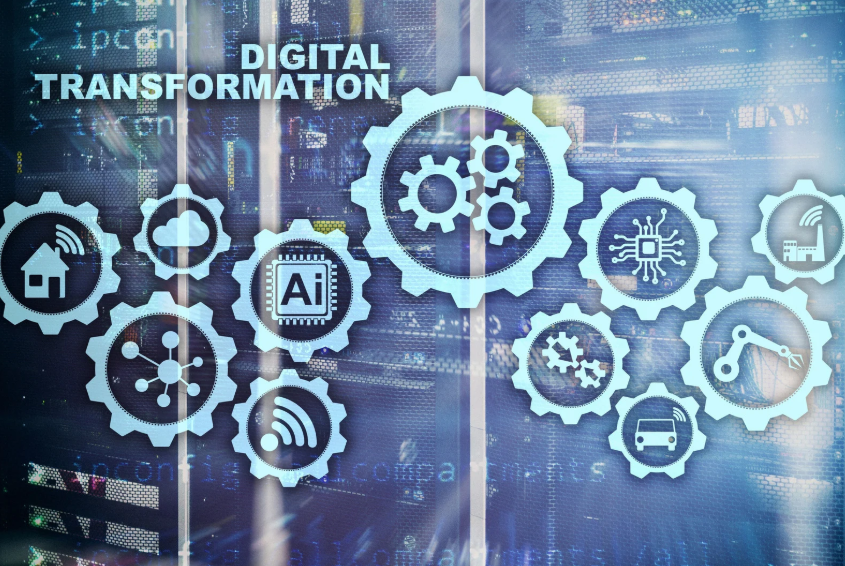Businesses today face increasing pressure to enhance efficiency, reduce costs, and improve decision-making. However, many companies still operate with fragmented systems that create inefficiencies and slow down operations. A platform for digital transformation offers a centralized solution to streamline processes, integrate systems, and optimize business performance. By leveraging a platform for digital transformation, businesses can unify their workflows, improve collaboration, and make data-driven decisions with ease.
What is a Centralized Platform for Digital Transformation?
A platform for digital transformation is an integrated system that connects different business processes, tools, and data sources into a single interface. This platform unifies operations across departments, eliminating silos and improving collaboration. Unlike traditional software that operates in isolation, a platform for digital transformation enables automation, real-time data access, and seamless integration with existing tools, making it easier to manage business operations efficiently.
The key functionalities of a platform for digital transformation include cloud computing, artificial intelligence (AI), and advanced analytics. These features help businesses to optimize workflows, enhance communication, and increase overall productivity. Organizations adopting a platform for digital transformation can replace outdated, inefficient processes with a modern, data-driven approach to operations.
Key Challenges in Business Operations Without a Centralized System
Many organizations struggle with inefficiencies due to disconnected systems. Without a platform for digital transformation, businesses often face the following challenges:
- Inefficiencies in workflow: Manual processes slow down operations, leading to bottlenecks and errors. A platform for digital transformation automates tasks, reducing delays and increasing productivity.
- Data silos and poor decision-making: When information is scattered across multiple systems, accessing accurate data becomes difficult. A platform for digital transformation centralizes data, ensuring teams have real-time access to critical information.
- Higher operational costs: Maintaining multiple software solutions can be costly. A platform for digital transformation consolidates tools, reducing expenses and optimizing resource allocation.
- Lack of visibility and coordination: Disjointed systems make it hard to monitor business performance. A platform for digital transformation provides a unified dashboard for tracking key metrics and making informed decisions.
Benefits of Using a Centralized Platform for Digital Transformation
Implementing a platform for digital transformation offers numerous advantages:
Improved Efficiency
A platform for digital transformation streamlines operations by automating repetitive tasks and optimizing workflows. Businesses can reduce manual errors and increase productivity by integrating multiple processes into one cohesive system.
Data-Driven Decisions
With real-time analytics, a platform for digital transformation enables businesses to make data-backed decisions. By centralizing information, organizations gain better insights into performance metrics, customer behavior, and market trends.
Enhanced Collaboration
A platform for digital transformation connects teams across different departments and locations, ensuring seamless communication. Employees can access shared resources, track project progress, and work collaboratively in real-time.
Cost Reduction
Businesses can eliminate redundant systems and reduce software maintenance costs by consolidating operations into a platform for digital transformation. This reduces IT overhead while improving operational efficiency.
Scalability and Flexibility
A platform for digital transformation grows with your business needs. Whether expanding to new markets or adding new services, a centralized system provides the flexibility to adapt to changing demands.
Key Features to Look for in a Centralized Digital Transformation Platform
When selecting a platform for digital transformation, consider the following features:
- Cloud-Based Infrastructure: Ensures remote accessibility and enhanced security.
- AI-Powered Automation: Streamlines tasks and enhances productivity.
- Customizable Dashboards: Provides real-time performance tracking.
- Seamless Integration: Works with existing business tools and software.
- User-Friendly Interface: Encourages employee adoption and ease of use.
Steps to Implement a Centralized Platform for Digital Transformation
Adopting a platform for digital transformation requires a strategic approach:
Assess Business Needs
Identify inefficiencies in your current processes and determine how a platform for digital transformation can address them.
Choose the Right Platform
Compare available solutions based on scalability, features, and integration capabilities.
Plan for Integration
Ensure that the platform for digital transformation seamlessly integrates with your existing systems to avoid disruptions.
Employee Training & Adoption
Provide onboarding and training to ensure a smooth transition to the platform for digital transformation.
Monitor and Optimize
Track performance metrics and continuously refine processes to maximize efficiency.
Real-World Examples of Businesses Benefiting from Centralized Platforms
Several companies have successfully adopted a platform for digital transformation to enhance operations:
- Retail Industry: A global retailer streamlined inventory management and customer experience using a platform for digital transformation.
- Healthcare Sector: Hospitals integrated patient data, improving efficiency and reducing administrative workload.
- Manufacturing: Companies optimized supply chain management and reduced production delays with a platform for digital transformation.
- Finance: Banks improved fraud detection and compliance monitoring through advanced analytics and automation.
Common Mistakes to Avoid When Adopting a Centralized Platform
Businesses often make mistakes when implementing a platform for digital transformation. Avoid these common pitfalls:
- Choosing the wrong platform: Ensure it meets your business’s scalability and integration needs.
- Lack of employee training: Without proper training, adoption rates may be low.
- Ignoring data security: Protect sensitive information with robust security measures.
- Overcomplicating processes: Keep workflows simple to maximize the benefits of a platform for digital transformation.
Future Trends in Digital Transformation and Centralized Platforms
The evolution of platforms for digital transformation continues to shape the future of business operations:
- AI and Machine Learning: Predictive analytics will improve efficiency and decision-making.
- Low-Code/No-Code Solutions: Businesses can develop custom applications with minimal coding expertise.
- Cybersecurity Enhancements: Increased focus on data protection and compliance.
- Hybrid Cloud Solutions: Combining on-premise and cloud-based systems for greater flexibility.
Takeaway
A platform for digital transformation is essential for modern businesses seeking to optimize operations and remain competitive. By integrating systems, automating workflows, and leveraging data-driven insights, organizations can enhance efficiency and drive long-term growth. Investing in a platform for digital transformation not only streamlines operations but also positions businesses for future success. Now is the time to explore the right solution and take your business to the next level.











